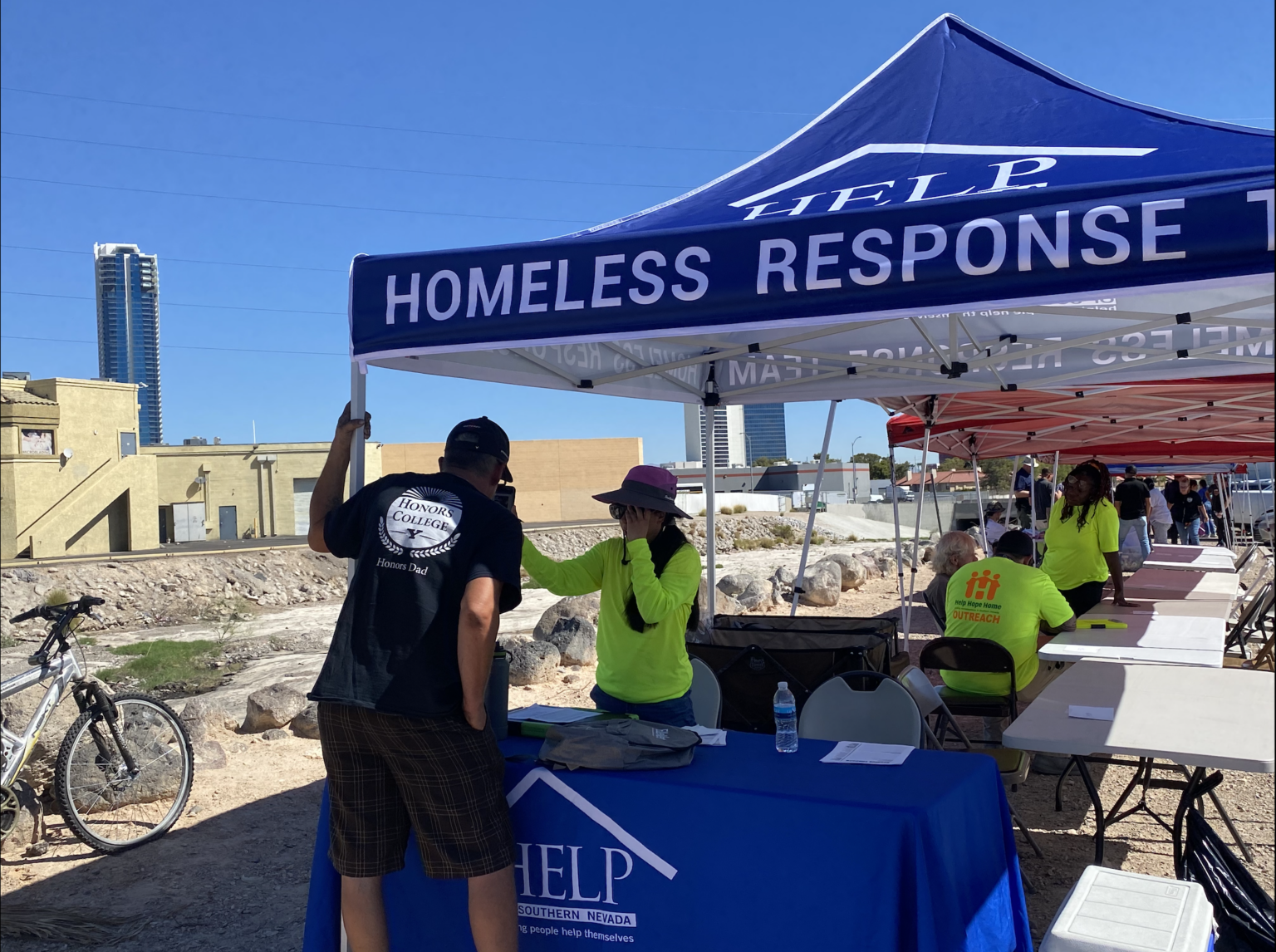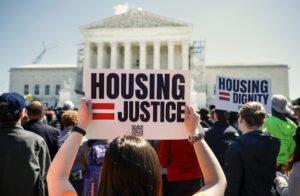6:28
News Story
Nonprofit gets funding to build supportive housing complex
50-unit complex will include case management, wrap-around services
Rising rents and limited housing stock in Southern Nevada, in addition to hurting tenants, has made it difficult for social service providers to place unhoused clients, or those at risk of homelessness, in apartments across the valley.
HELP of Southern Nevada is now planning to build its first 50-unit complex specifically to provide on-site permanent supportive housing, which comes with case management and wrap-around support services to address the growing need.
The organization received about $18 million from Clark County last week, which will go toward the 50-unit “Tropicana Trails” project.
It was part of $30 million Clark County allocated to construction and operation of housing projects that focus on extremely low-income residents, including those experiencing or at risk of homelessness.
Fuilala Riley, the executive director and CEO of HELP of Southern Nevada, said building a facility was something the nonprofit has considered but never pursued – partly because it’s an expensive endeavor.
The housing crisis, which has been exacerbated by the pandemic, made the change necessary.
HELP of Southern Nevada has previously used “scattered site” housing across the valley where case managers “go find apartments out in the community and then we worked really hard to get our clients into apartments,” Riley said.
But the funding to place clients in permanent supportive housing doesn’t go as far as it used to and Riley said “it’s harder and harder to find units that we can afford.”
A studio apartment that once cost $900 a month is now $1,214, she said.
Riley said while state and local governments have directed federal funding provided by the American Rescue Plan Act toward building affordable housing, most of those projects aren’t targeted at extremely low income residents.
A portion of the developments target those who earn 30% to 50% area median income “but a bulk” of projects are aimed at households with 50 to 80% area median income, she said.
“This isn’t me advocating for other types of affordable housing to stop being built,” she added. “We still need that.”
A recent report from the National Low Income Housing Coalition estimates Nevada has more than 91,000 extremely low-income households, defined as those with incomes at or below the federal poverty level.
In Nevada, only 17 units per 100 households are affordable for people making less than 30% of area median income, she said, and ”in Southern Nevada, there are only 14” per 100 households.
Tropicana Trails, she said, would be geared toward extremely low-income residents who make less than 30% of area median income.
HELP of Southern Nevada is working with developer George Gekakis to build the project, which Riley hopes will break ground by December of this year and open the following December.
“This is our first but I don’t think it will be our last,” Riley said.
HELP’s project wasn’t the one the county allocated funding by the county.
The Coordinated Living of Southern Nevada, which is partnering with Mojave Health, was approved for funds to develop a 50-unit project for extremely low-income individuals with chronic mental illness, and Nevada HAND will get money to expand an existing assisted living facility and develop a project for foster youth aging out of the system.
Cost, benefit
The need for more housing, specifically permanent supportive housing for those experiencing or at risk of homelessness, comes as the rates of homelessness have increased in Southern Nevada.
Homelessness in Clark County jumped 16% in 2023 from its previous year.
There were 6,566 people counted in January, 2023. An estimated 16,251 were expected to experience homelessness in Clark County at some point last year.
“The question is, where do folks go that are in that 30% of medium income or less?” Riley said.
The number of permanent supportive housing beds in the state has decreased in recent years, according to an analysis from the National Alliance to End Homelessness.
There were 2,086 supportive housing beds statewide in 2022. The number was 2,284 in 2020 and 2,484 in 2019.
Data collection was interrupted in 2021 due to the pandemic, the organization noted.
Riley says it’s partly because funding was allocated to other types of housing, such as transitional housing. But also, rising rents means providers can’t house as many people.
“A lot of folks will make the case that permanent supportive housing is too expensive,” Riley said.
Research on costs of services conducted by the Corporation for Supportive Housing, which provides assistance and data on housing, showed that “a year of supportive housing equals the same as three emergency visits at a UMC and it also equals three months at the Clark County Detention Center,” Riley said.
While Tropicana Trails is nearly two years from opening its doors, there could be more projects targeting extremely low-income renters.
Lawmakers in 2023 passed Assembly Bill 310, which allocated $30 million from the state general fund to go toward grants to create and support permanent supportive housing.
The Nevada Housing Division created a supportive housing grant fund designed to develop housing with wrap-around social services for unhoused folks.
Grant applications will open this summer Steve Aichroth with the Nevada Housing Division, recently told the Nevada Interagency Council on Homelessness.
State lawmakers last year also approved a $100 million fund to build a “transformational campus” to provide support services for the unhoused and those at risk of homelessness – the proposal would be similar to the City of Las Vegas’ Courtyard Homeless Resource Center.
That project is still being developed, though Clark County commissioners have expressed reservations on opening another large-scale facility similar to the Courtyard and have advocated converting hotels into non-congregate shelter space .
Riley said solving homelessness will take a multipronged approach that has investments in preventative measures, interim solutions and permanent housing.
“It’s imperative we make concurrent investments in those three areas,” she said. “Without all three, if you don’t make those prevention investments our homeless population is going to possibly double, maybe even triple.”
She says some proposals under consideration, such as building a larger homeless “campus,” is an interim or short term solution.
“Putting all our money in one bucket isn’t going to solve the problem long term,” she said.
Our stories may be republished online or in print under Creative Commons license CC BY-NC-ND 4.0. We ask that you edit only for style or to shorten, provide proper attribution and link to our website. AP and Getty images may not be republished. Please see our republishing guidelines for use of any other photos and graphics.




